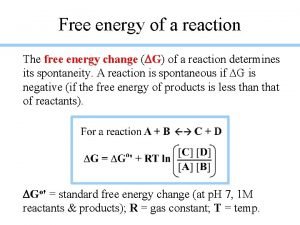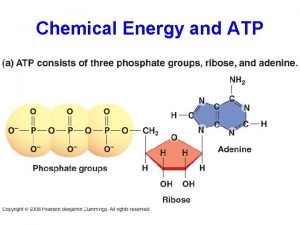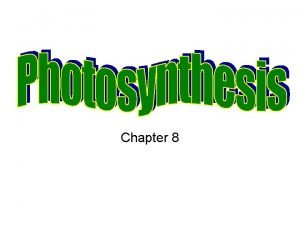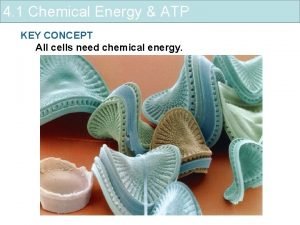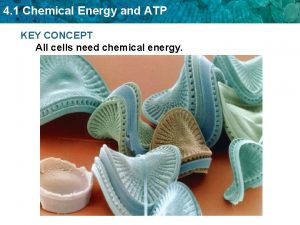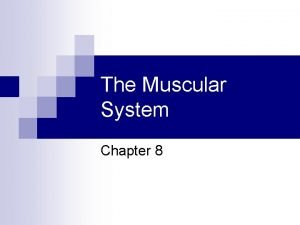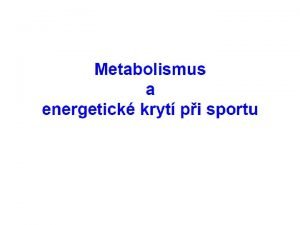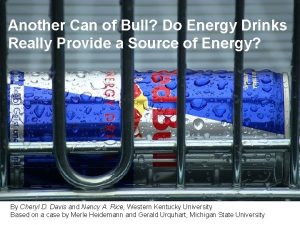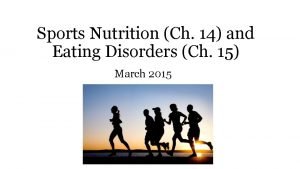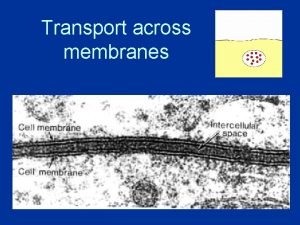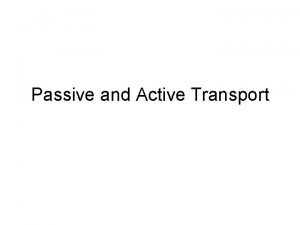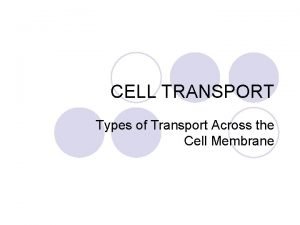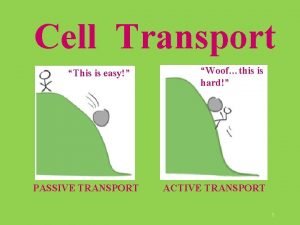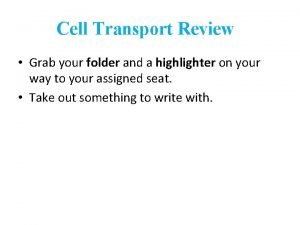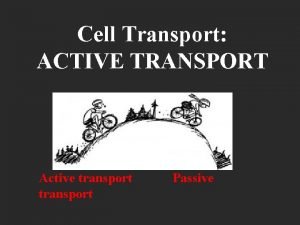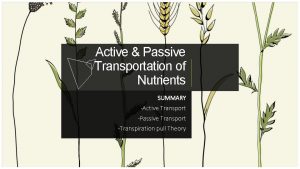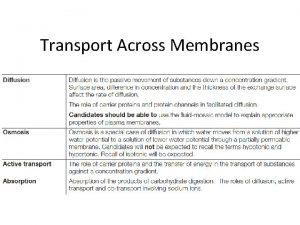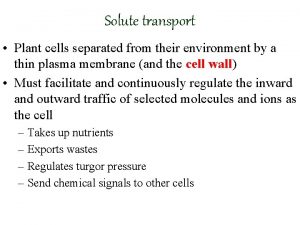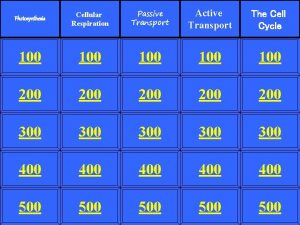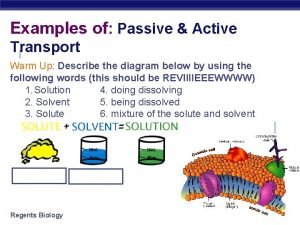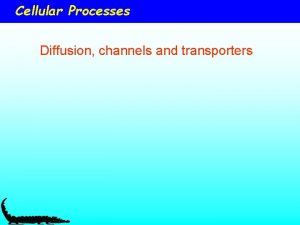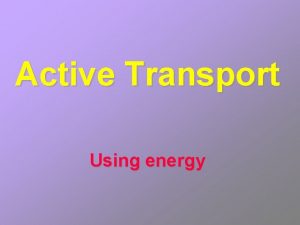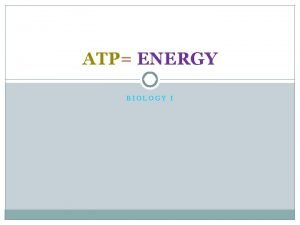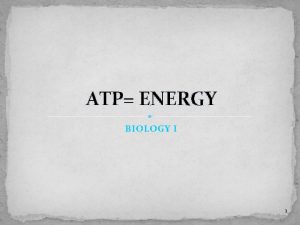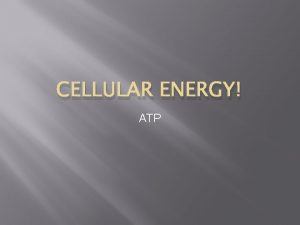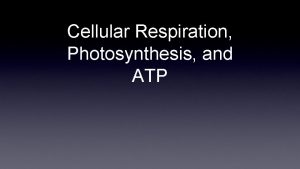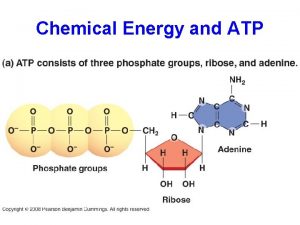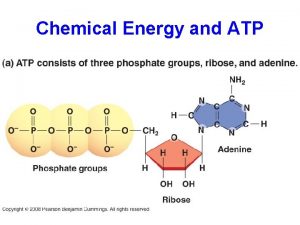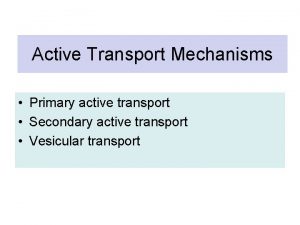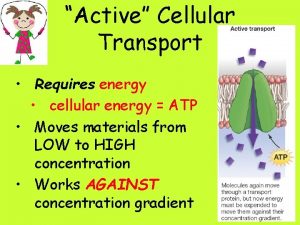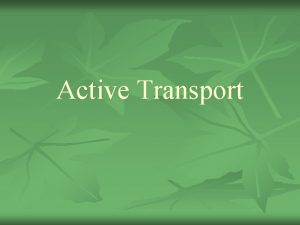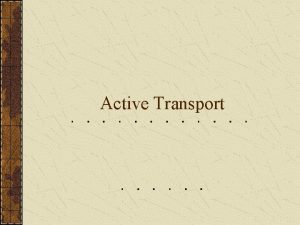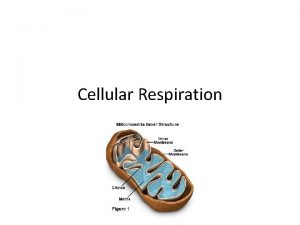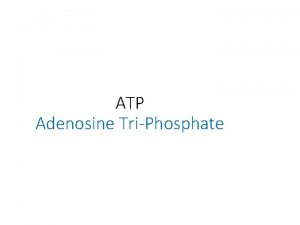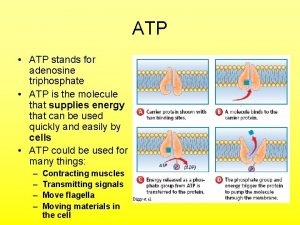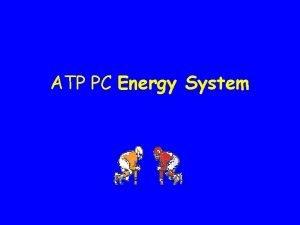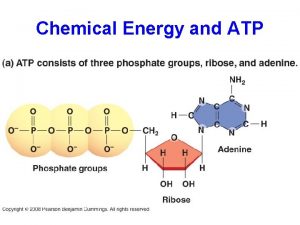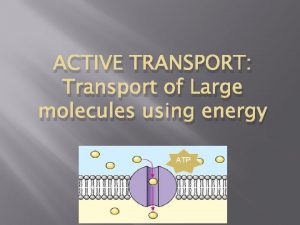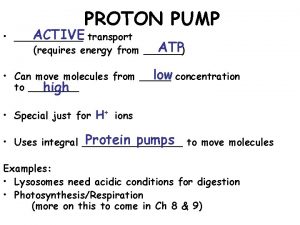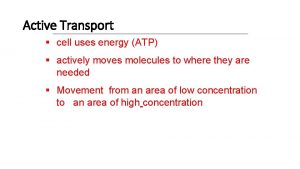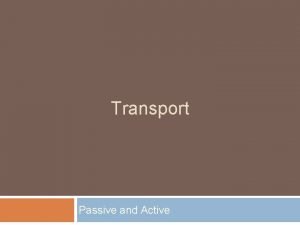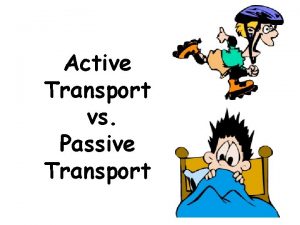Active Transport ATP ATP Using Energy ATP Active





































- Slides: 37

Active Transport ATP ATP Using Energy ATP

Active Transport • Transport methods that involve work (energy) energy by the cell are forms of active transport


• Carrier molecules are proteins in the cell membrane that transport large molecules or molecules that cannot dissolve in the lipids that make up the cell membrane. • They pick up molecules on one side of the membrane and move them to the other side.


2 Kinds of Carrier Transport 1. facilitated diffusion substances move with the concentration gradient • Carrier proteins speed things up • passive transport because energy is not used • ex: glucose


2. active transport - involves the movement of materials against the concentration gradient • requires the use of cellular energy • ex: Liver cells store glucose and have higher concentration than the blood. The cells use active transport to move glucose from the blood into the liver. • Ex: Na+ – K+ pump



Bulk Transport Movement in Vesicles

Endocytosis • endo = to enter • cyte = cell

• Large molecules, such as protein, enter the cell when they are surrounded by the cell. • This forms a vesicle for the transport of these molecules. • This process is called endocytosis


Phagocytosis “ cell eating ” • Solid particles enter through a vesicle ex: white blood cells eating bacteria


Phagocytosis = cells eating



Pinocytosis “ cell drinking ” • Particles enter as a droplet (liquid) Ex: human egg cell absorbs nutrients Ex: absorption of nutrients by cells in the intestines


Pinocytosis = cells drinking

Exocytosis • exo = to exit • cyte = cell

• When large particles leave the cell, they use a vesicle that fuses with the cell membrane. • The releasing of these molecules is called exocytosis


ex: secretion of proteins by a cell







The End




 Membrane structures that function in active transport
Membrane structures that function in active transport Primary active transport vs secondary active transport
Primary active transport vs secondary active transport Now answer the questions
Now answer the questions Passive transport vs active transport venn diagram
Passive transport vs active transport venn diagram Pinocytosis vs phagocytosis
Pinocytosis vs phagocytosis Bioflix activity membrane transport active transport
Bioflix activity membrane transport active transport What is passive transport
What is passive transport Bioflix membrane transport
Bioflix membrane transport Uniport symport antiport
Uniport symport antiport Section 3 using thermal energy answers
Section 3 using thermal energy answers Energy energy transfer and general energy analysis
Energy energy transfer and general energy analysis Energy energy transfer and general energy analysis
Energy energy transfer and general energy analysis Phosphoanhydride
Phosphoanhydride Atp energy
Atp energy How does atp release energy
How does atp release energy What type of energy is stored in atp
What type of energy is stored in atp Is atp chemical energy
Is atp chemical energy Latent time
Latent time Atp cp energy system
Atp cp energy system A can of bull
A can of bull Bulimia definition
Bulimia definition Active vs passive transport
Active vs passive transport Does exocytosis require energy
Does exocytosis require energy Active transport requires
Active transport requires Active transport vs diffusion
Active transport vs diffusion Cell transport
Cell transport Active transport easy drawing
Active transport easy drawing Characteristics of active transport
Characteristics of active transport Exocytosis active or passive
Exocytosis active or passive Facilitated diffusion and active transport
Facilitated diffusion and active transport Active and passive transport
Active and passive transport Facilitated diffusion and active transport
Facilitated diffusion and active transport Active transport examples
Active transport examples Secondary active transport
Secondary active transport Is photosynthesis active or passive transport
Is photosynthesis active or passive transport Secondary active transport
Secondary active transport Warm up transport
Warm up transport Is symport secondary active transport
Is symport secondary active transport












